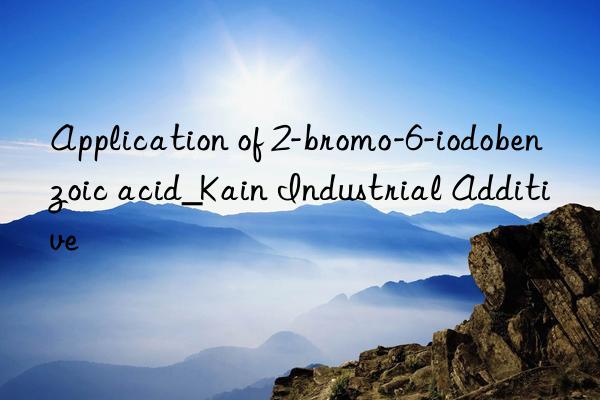
Overview[1]
2-Bromo-6-iodobenzoic acid is a carboxylic acid substance that can be used as a pharmaceutical synthesis intermediate.
Preparation[1]
2-Bromo-6-iodobenzoic acid is prepared as follows: 2-bromobenzoic acid (20.1g, 100mmol), palladium (II) acetate (1.12mg, 5mmol), iodobenzene diacetate (38.64g, 120mmol) and elemental iodine (30.48g, 120mmol) dissolved in N,N. Dimethylformamide (240 mL) was stirred at 100 °C overnight. The reaction mixture was cooled to room temperature, diluted with methyl-tert-butyl ether and 2M hydrochloric acid, and washed with 10% aqueous sodium metabisulfite solution. The organic phase was extracted with 2M sodium hydroxide, and the resulting alkaline aqueous phase was acidified with concentrated aqueous hydrochloric acid and re-extracted with methyl-tert-butyl ether. The solvent was removed under reduced pressure to obtain 2-bromo-6-iodobenzoic acid (24.3 g, 74% yield).
1HNMR (400.5MHz, DMSO-d6) δppm7.09 (dd, J=7.8,7.9Hz, 1H), 7.68 (d, J=7.9Hz, 1H), 7.87 (d, J=7.8Hz, 1H ).
Apply[1]
2-Bromo-6-iodobenzoic acid can be used as a pharmaceutical synthesis intermediate. For example, prepare tert-butyl 4-[1-(2-bromo-6-iodobenzoyl)-2-(ethoxycarbonyl)hydrazino]piperidine-1-carboxylate: add to stirred 2-bromo-6 -To a solution of iodobenzoic acid (12 g, 36.6 mmol) and oxalyl chloride (6.2 mL, 73.3 mmol) in dichloromethane (570 mL), a catalytic amount of N,N-dimethylformamide (20 μL) was added. The reaction was stirred under N2 atmosphere for 1 hour. The solvent was removed under reduced pressure and the residue was dissolved in dichloromethane (240 mL). Add 4-(N'-ethoxycarbonyl-hydrazino)-piperidine-1-carboxylic acid tert-butyl ester (IX) (11.5g, 40.2mmol) and N,N-diisopropylethylamine (25.5mL , 146.4mmol), and the mixture was stirred at room temperature for 18 hours. The volatiles were removed under reduced pressure and the crude product was diluted with dichloromethane. The solution was washed twice with water, and the organic phase was dried over anhydrous sodium sulfate and concentrated in vacuo. The crude product was purified by flash chromatography (cyclohexane/acetone 8:2) to give the desired product (14.34 g, 66%).
1HNMR (400.5MHz, DMSO-d6, temperature=70℃, the ratio of isomer mixture is 1.3/1) δppm1.07 (t, J=7.2Hz, 3×0.56H), 1.24 (t, J =7.2Hz, 3×0.43H), 1.38 (s, 9×0.43H), 1.42 (s, 9×0.56H), 1.40-2.00 (m, 4H), 2.50-2.60 (m, 2×0.43H) , 2.80-2.90 (m, 2×0.56H), 3.35-3.44 (m, 0.43H), 3.85-4.20 (m, 4H), 4.42-4.53 (m, 0.56H), 6.99 (dd, J=7.9, 8.1Hz, 0.56H), 7.11 (dd, J=7.9, 8.1Hz, 0.43H), 7.60 (d, J=8.1Hz, 0.56H), 7.72 (d, J=8.1Hz, 0.43H), 7.82 ( d, J=7.9Hz, 0.56H), 7.94 (d, J=7.9Hz, 0.43H), 8.95 (br.s, 0.56H), 9.15 (br.s, 0.43H).
Main reference materials
[1] (US20140235675) 3-Oxo-2,3-dihydro-1H-indazole-4-carboxamide derivatives as PARP-1 inhibitors

 微信扫一扫打赏
微信扫一扫打赏

